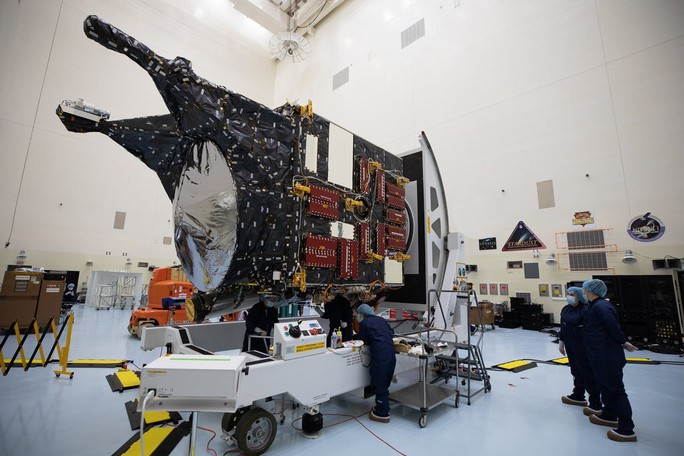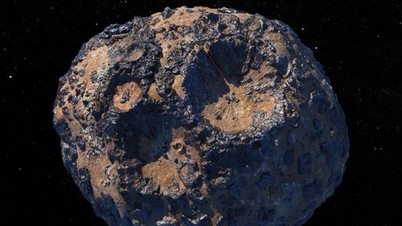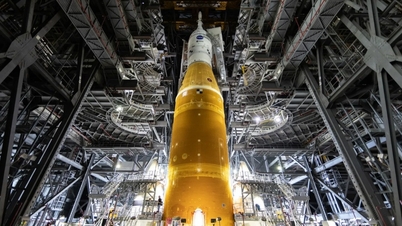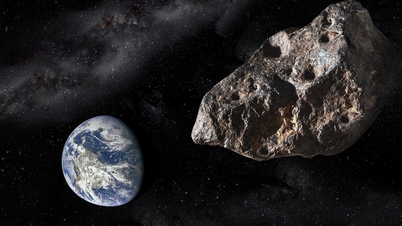NASA's Psyche spacecraft is scheduled to launch at 10:16 p.m. on October 12 (Vietnam time) from the Kennedy Space Center in Florida, USA, atop a SpaceX Falcon Heavy rocket.
It is estimated that in 2029, after traveling 3.5 billion kilometers, this spacecraft will reach the far side of the asteroid belt between Mars and Jupiter, where 16 Psyche - often called Psyche for short - is residing, according to Live Science.

Psyche spacecraft during construction. (Photo: NASA)
At 279 km across at its widest point, the potato-shaped asteroid is one of the largest known in the Solar System.
It has been of interest to scientists in recent years, for various reasons.
First, Psyche shows signs of being a “failed planet.” The whole “potato” could be the metallic core of a planet that went wrong during its formation, colliding violently with other celestial bodies, leaving its core exposed.
If it were luckier, today's Solar System would have had nine planets, with Psyche nestled between Mars and Jupiter.
However, Psyche has fundamental differences that make scientists hope that studying it could help learn about a planet-forming mechanism different from the one that created Earth.
In addition, some initial observations have suggested that the composition of this celestial body may include a lot of gold, platinum... with a total value many times larger than the world economy .
However, NASA insists they have no intention of mining precious metals here, but only want to access it for research, if Psyche really has such an interesting, unusual composition.
The Psyche spacecraft - about the size of a truck and powered by solar energy - will carry a magnetometer, a gamma-ray and neutron spectrometer, a multispectral imager... to study the asteroid.
During the journey, Psyche will communicate with Earth via the Deep Space Optical Communications experiment, which uses lasers to send high-bandwidth communications.
(Source: Nguoi Lao Dong)
Source


![[Photo] Keep your warehouse safe in all situations](https://vphoto.vietnam.vn/thumb/1200x675/vietnam/resource/IMAGE/2025/10/1/3eb4eceafe68497989865e7faa4e4d0e)

![[Photo] Hanoi morning of October 1: Prolonged flooding, people wade to work](https://vphoto.vietnam.vn/thumb/1200x675/vietnam/resource/IMAGE/2025/10/1/189be28938e3493fa26b2938efa2059e)


![[Photo] President of the Cuban National Assembly visits President Ho Chi Minh's Mausoleum](https://vphoto.vietnam.vn/thumb/1200x675/vietnam/resource/IMAGE/2025/10/1/39f1142310fc4dae9e3de4fcc9ac2ed0)






















































































Comment (0)